Subscribe now and get the latest podcast releases delivered straight to your inbox.
If you don’t understand your customer, you’re going to struggle to sell. And while it seems like common sense to “think like your customer,” I’m always astounded at how many businesses struggle to do so.
And here’s the worst part: They think they understand their customer. But they really don’t.
What they actually have is just a pile of assumptions based on limited (and often outdated) information, or some dusty old buyer personas about Homeowner Holly or Marketing Manager Martin.
That’s not going to cut it.
It’s time for some real learning, and the success of your organization could hang in the balance.
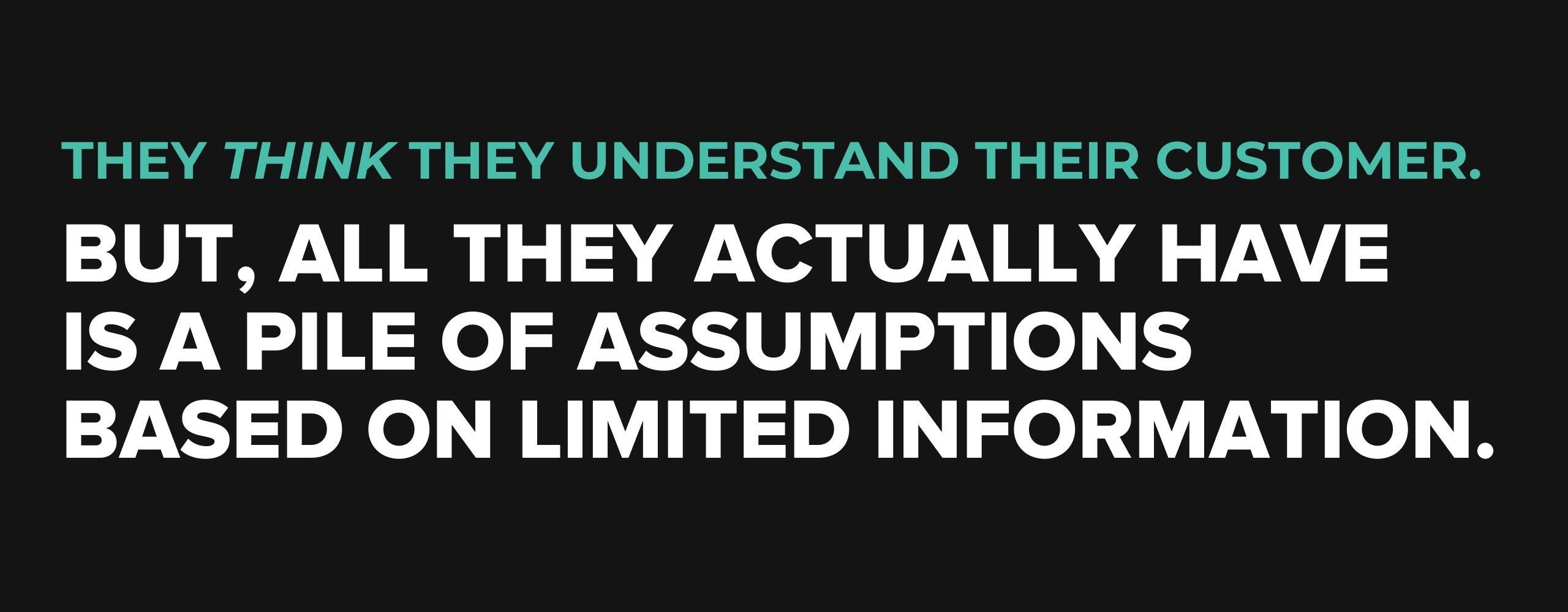
So, let’s dive into why so many business leaders struggle to understand their customers.
First off, who needs to understand your customers?
Whose responsibility is it to understand your customer?
Sales? Of course.
Leadership? Big time.
Marketing? 100%.
Customer service? You bet.
Every leader at your company — and every department they run — needs to understand your customer. After all, this affects messaging, strategic direction, communication, sales strategy, and more.
What follows are three common errors that I’ve seen in companies I’ve worked with — as well as steps you can take to solve them. Understanding how to correct these assumptions can help you take off your blinders and start to see.
Why you struggle to think like your customer
So, what’s holding you and your team back? These are the most common barriers I see companies face.
1. You’ve never been through your own sales process
This is something that never ceases to amaze me. I talk to business leaders and ask them about their sales process — and they only have a vague idea of what it entails.
I get a lot of “Well, I’d need to check in with my sales manager to learn more.”
And I shake my head.
Sales is the lifeblood of your business. You should have a damn good understanding of what that process looks like. (I mean, if it were up to me, I’d have a clear notion of every sales rep’s pipeline at any given moment.)
But just knowing your sales process is not enough to understand your buyers. You need to experience it.
How to fix it
You can’t understand your sales process until you go through it as a customer. No, seriously. Do it. 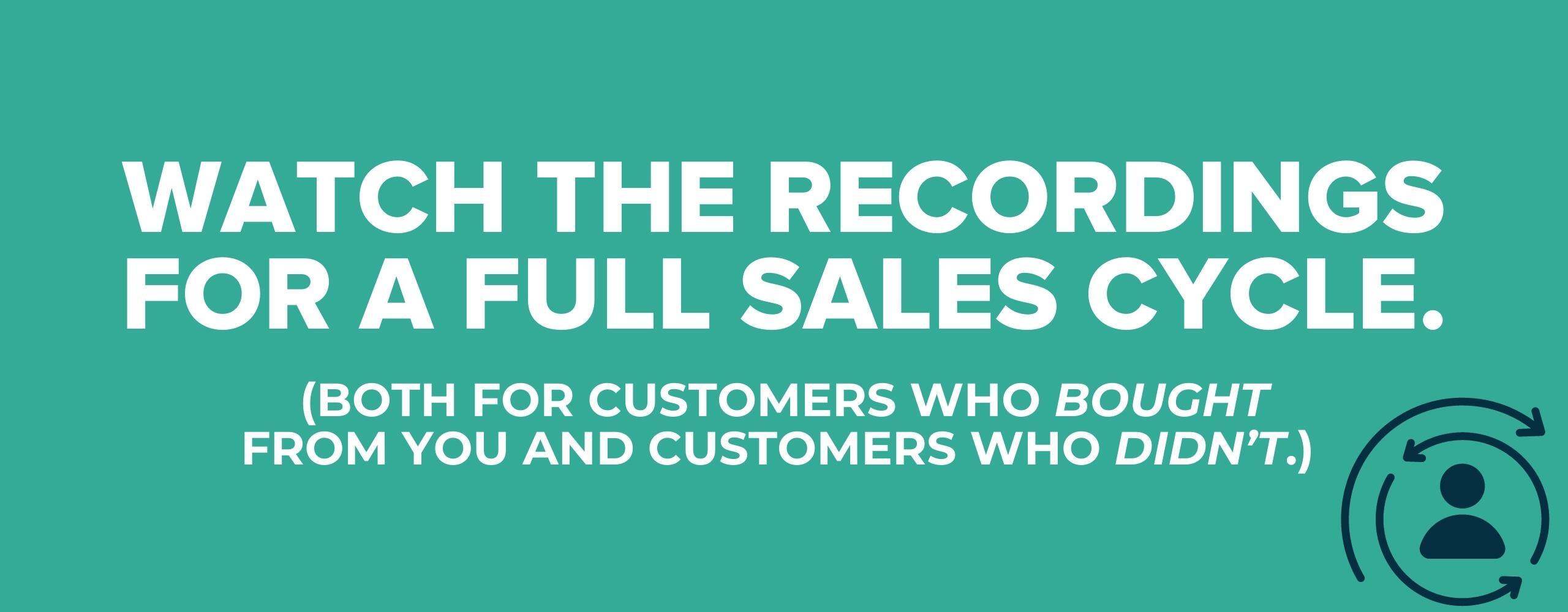 Start on your website, submit a form to book a call or a meeting, and see what kind of email confirmation you get and what kinds of materials get sent your way.
Start on your website, submit a form to book a call or a meeting, and see what kind of email confirmation you get and what kinds of materials get sent your way.
Scrutinize everything.
Imagine you’re a real customer. What are your impressions? Where are you frustrated by things going too fast or too slow?
Then, you should role-play a full sales call with members of your sales team. At the very least, watch the recordings for a full sales cycle — both for customers who bought from you and customers who didn’t.
This way, you’ll truly begin to understand what your customers experience.
2. Your whole sales process is about you, not your buyer
Take a look at your website. Take a look at your marketing emails. Check out your sales materials and presentations — everything you were sent or shown in the sales process.
If you’re like most companies, you’ll see a lot of “we” and “our” and “us.”
You know, stuff like this:
We offer state of the art…
Our service is…
We focus on...
Our team can...
What you’ll see much less of is “you.”
The website is about the company, not about the buyer
So, let me ask you this: How can you put yourself in your buyer’s shoes if you talk more about how great you are than you do about the problems they’re facing?
And I get it. You want to prove that what you sell is worthwhile — that people should consider buying from you. But you don’t do that with a hard sell.
You don’t get a second date if you spend the first date bragging about your resume.
How to fix it
The more you listen to your customers (in sales calls, surveys, interviews, etc.), the more you’ll hear them articulate their challenges.
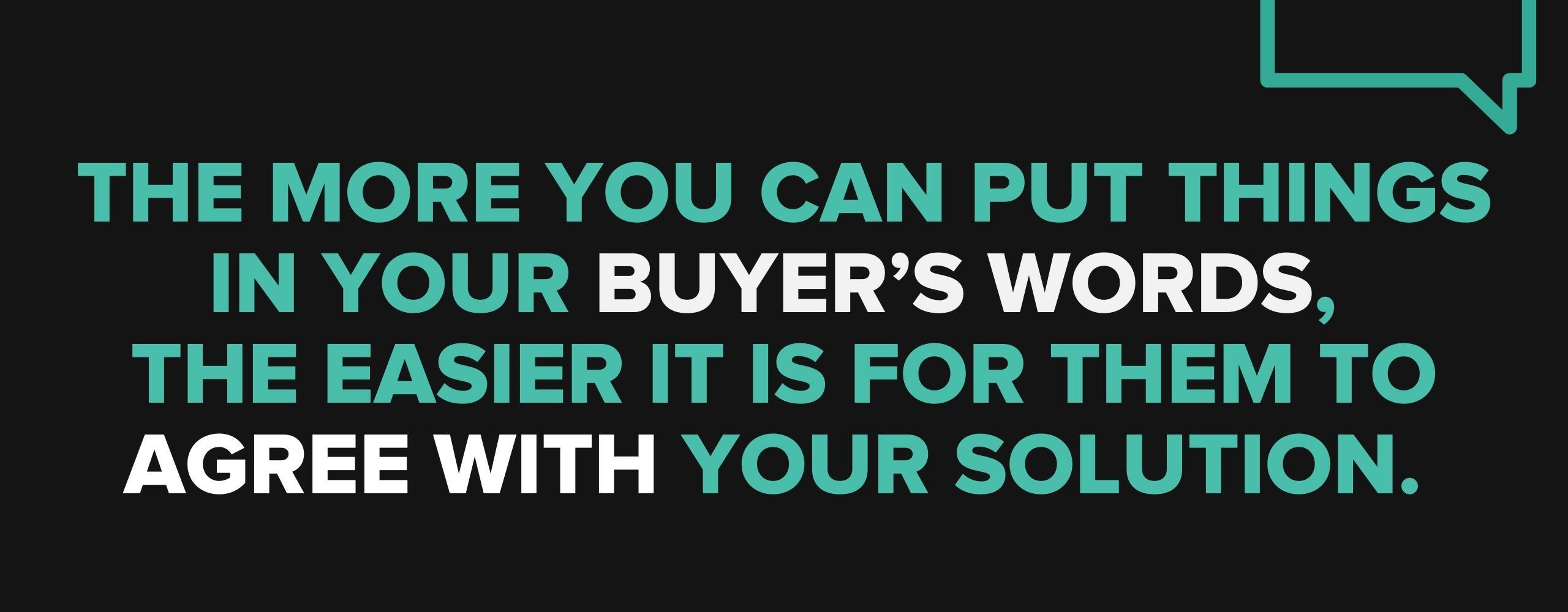
Then you can use this knowledge to improve your website headlines, email copy, and more.
The more you can put things in your buyer’s words, the easier it is for them to agree with your solution.
Want to see some examples of what I mean?
Look at ClickUp — a project management system. They don’t brag about features or UI or other minutiae.
Their message is simple. You’re wasting time. We can help you save time.
This is in the language of their buyer. You can delve deeper into product details as you make your way through their website. But their pop-ups, headlines, and large ads all communicate the same message — and it’s all in the language of the buyer.
Or, check out Toast, a platform for restaurants to streamline how they sell to customers. The value proposition is about the restaurants, not about Toast.
Same thing. The customers feel heard and understood.
Last one. Turo is like the Airbnb of car rentals. Their homepage is about the adventures you can have, not the app features or costs.
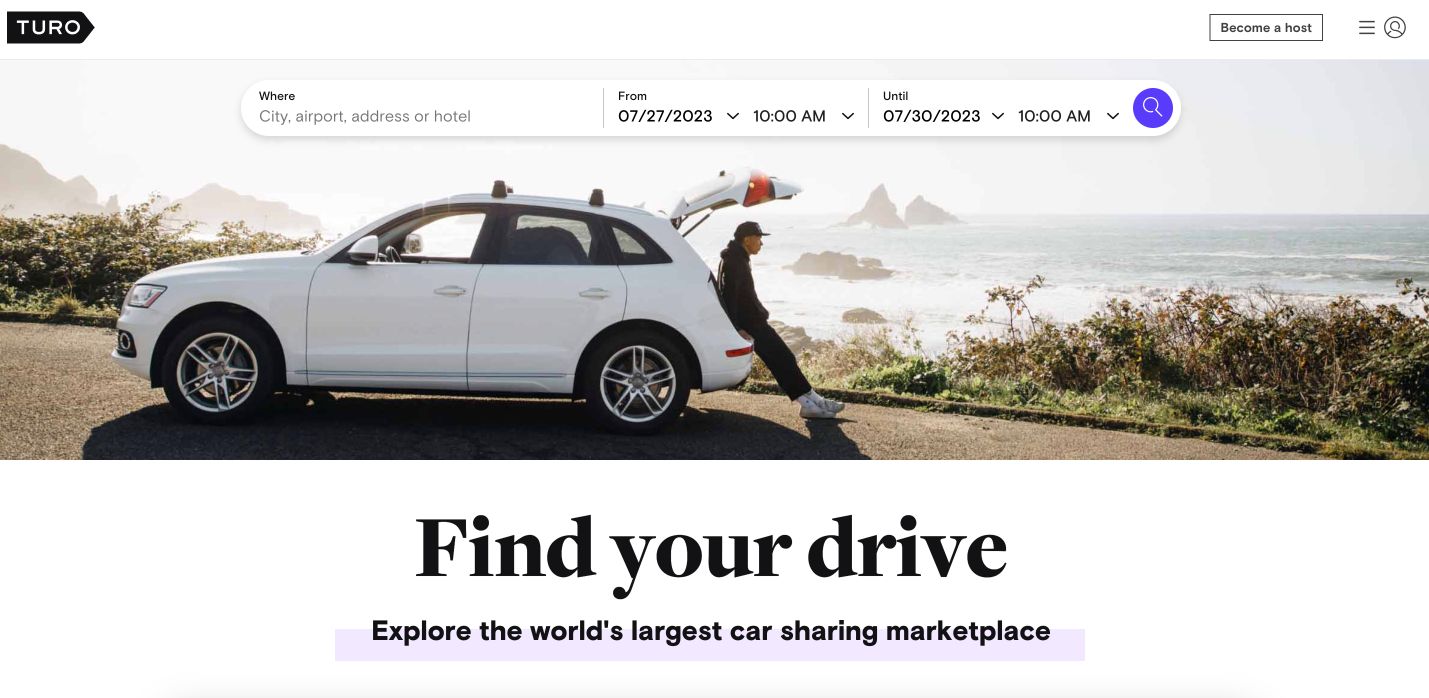
3. Your sales reps talk too much
A few years ago, Gong put out research based on more than 25,000 recorded B2B sales calls. The findings were pretty eye-opening:
Most sales reps talk for about 70% of any given meeting.
And the thing is — they don’t even realize they’re doing it.
When individual reps were presented with data about their own calls, they were floored. Salespeople tend to think they’re really good listeners, and that they’re focused on the needs of their buyers, but the data says otherwise.
All too often, sales pros fall back into their familiar talk tracks, putting themselves on stage and forcing the customer to sit there and listen.
But there was another key finding from the Gong report: The most successful sales reps — those who close the most and earn the biggest commissions — listen more than they talk.
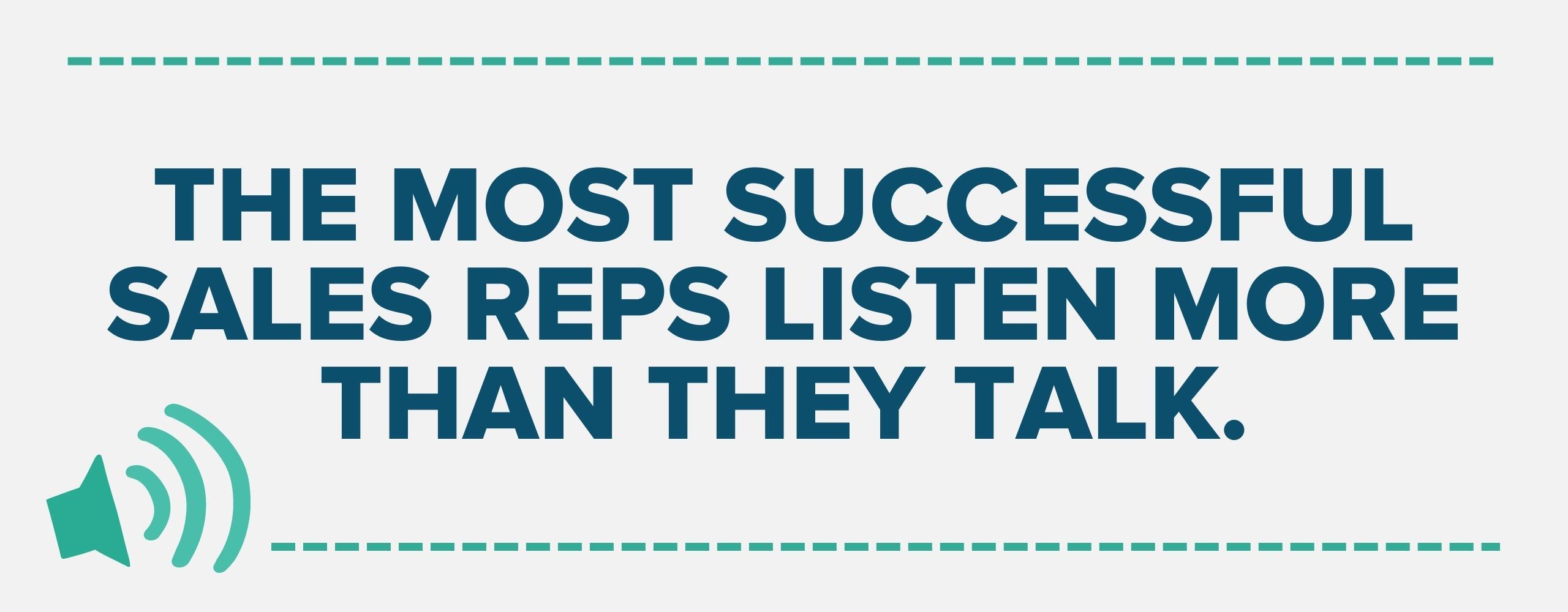
In fact, it’s almost the reverse of the average. Instead of talking for 70% of the meeting, top-performing sales reps talk for about 40%, leaving the bulk of the meeting open for the prospect to explain challenges and ask questions.
How to fix it
The first step toward solving any problem is to realize it’s a problem.
You can use a tool like Gong or Chorus to quickly analyze talk time. This gives you a baseline. Then, ask your sales reps to bring their number down by 10%.
To get them comfortable with this, do role-plays and other activities that promote active listening and limited talking.
Next, pare down your slide decks to help curb the urge to feature dump. The fewer the slides the better.
The business basic that everyone gets wrong
If you take these three steps, you’ll be astounded at how much you pick up. You’ll quickly find that many of your assumptions were wrong — and you can confirm the ones that were right.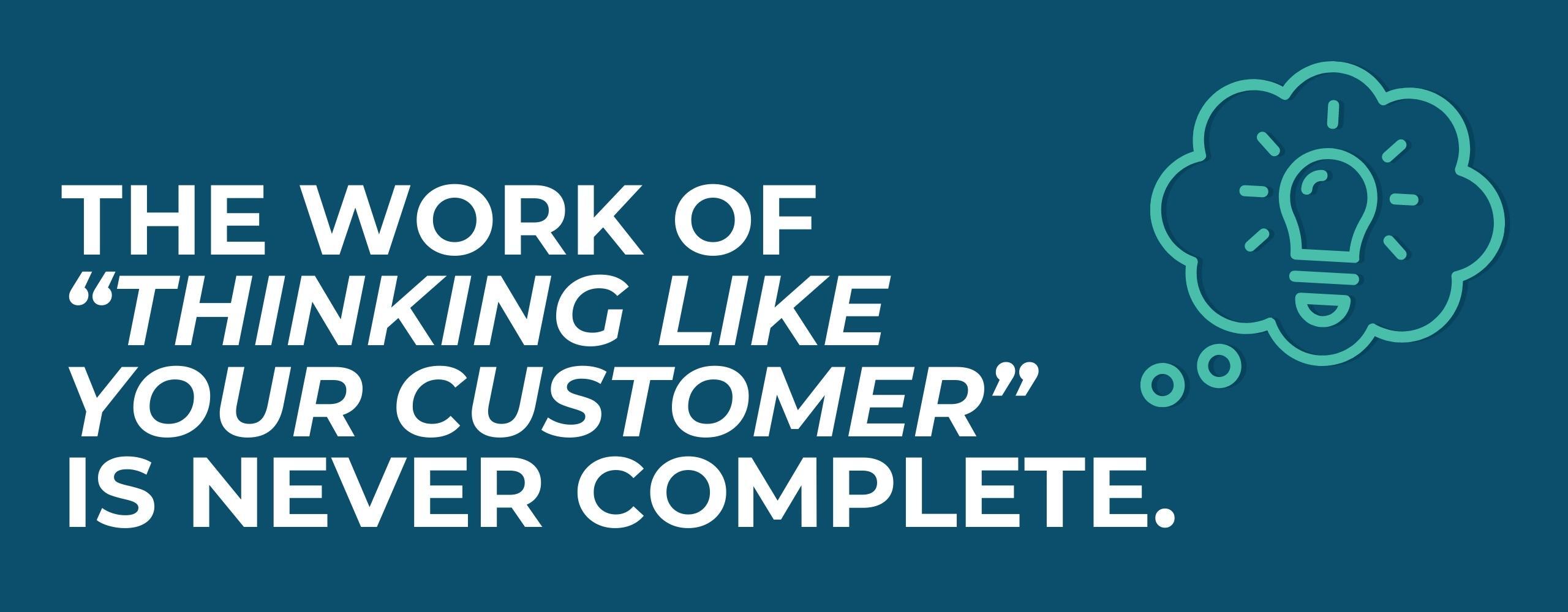
But always remember, your buyers are not a monolith. Even two customers who look identical on paper can be different in person.
Thus, the work of “thinking like your customer” is never complete.
Did you go through your entire sales process? Great. Now plan to do it twice a year from here on out.
Did you watch a sales call to hear straight from the buyer? Great. Now watch one call per week from here on out.
This is about building a company culture of inquiry and learning. When you take that stance, you can start to see what you’ve been missing all along.


Order Your Copy of Marcus Sheridan's New Book — Endless Customers!

